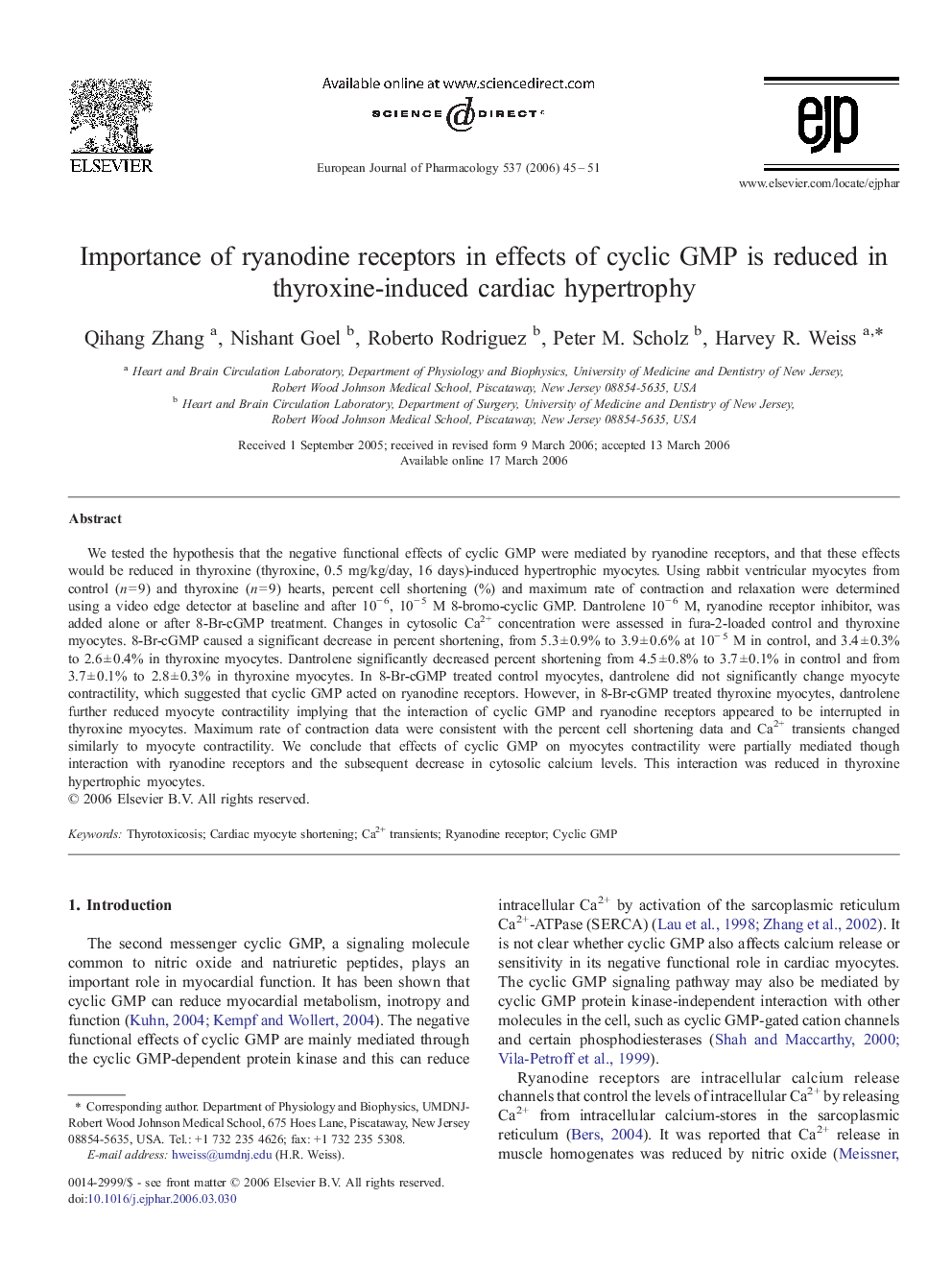| Article ID | Journal | Published Year | Pages | File Type |
|---|---|---|---|---|
| 2537282 | European Journal of Pharmacology | 2006 | 7 Pages |
Abstract
We tested the hypothesis that the negative functional effects of cyclic GMP were mediated by ryanodine receptors, and that these effects would be reduced in thyroxine (thyroxine, 0.5 mg/kg/day, 16 days)-induced hypertrophic myocytes. Using rabbit ventricular myocytes from control (n = 9) and thyroxine (n = 9) hearts, percent cell shortening (%) and maximum rate of contraction and relaxation were determined using a video edge detector at baseline and after 10â 6, 10â 5 M 8-bromo-cyclic GMP. Dantrolene 10â 6 M, ryanodine receptor inhibitor, was added alone or after 8-Br-cGMP treatment. Changes in cytosolic Ca2+ concentration were assessed in fura-2-loaded control and thyroxine myocytes. 8-Br-cGMP caused a significant decrease in percent shortening, from 5.3 ± 0.9% to 3.9 ± 0.6% at 10â 5 M in control, and 3.4 ± 0.3% to 2.6 ± 0.4% in thyroxine myocytes. Dantrolene significantly decreased percent shortening from 4.5 ± 0.8% to 3.7 ± 0.1% in control and from 3.7 ± 0.1% to 2.8 ± 0.3% in thyroxine myocytes. In 8-Br-cGMP treated control myocytes, dantrolene did not significantly change myocyte contractility, which suggested that cyclic GMP acted on ryanodine receptors. However, in 8-Br-cGMP treated thyroxine myocytes, dantrolene further reduced myocyte contractility implying that the interaction of cyclic GMP and ryanodine receptors appeared to be interrupted in thyroxine myocytes. Maximum rate of contraction data were consistent with the percent cell shortening data and Ca2+ transients changed similarly to myocyte contractility. We conclude that effects of cyclic GMP on myocytes contractility were partially mediated though interaction with ryanodine receptors and the subsequent decrease in cytosolic calcium levels. This interaction was reduced in thyroxine hypertrophic myocytes.
Related Topics
Life Sciences
Neuroscience
Cellular and Molecular Neuroscience
Authors
Qihang Zhang, Nishant Goel, Roberto Rodriguez, Peter M. Scholz, Harvey R. Weiss,
